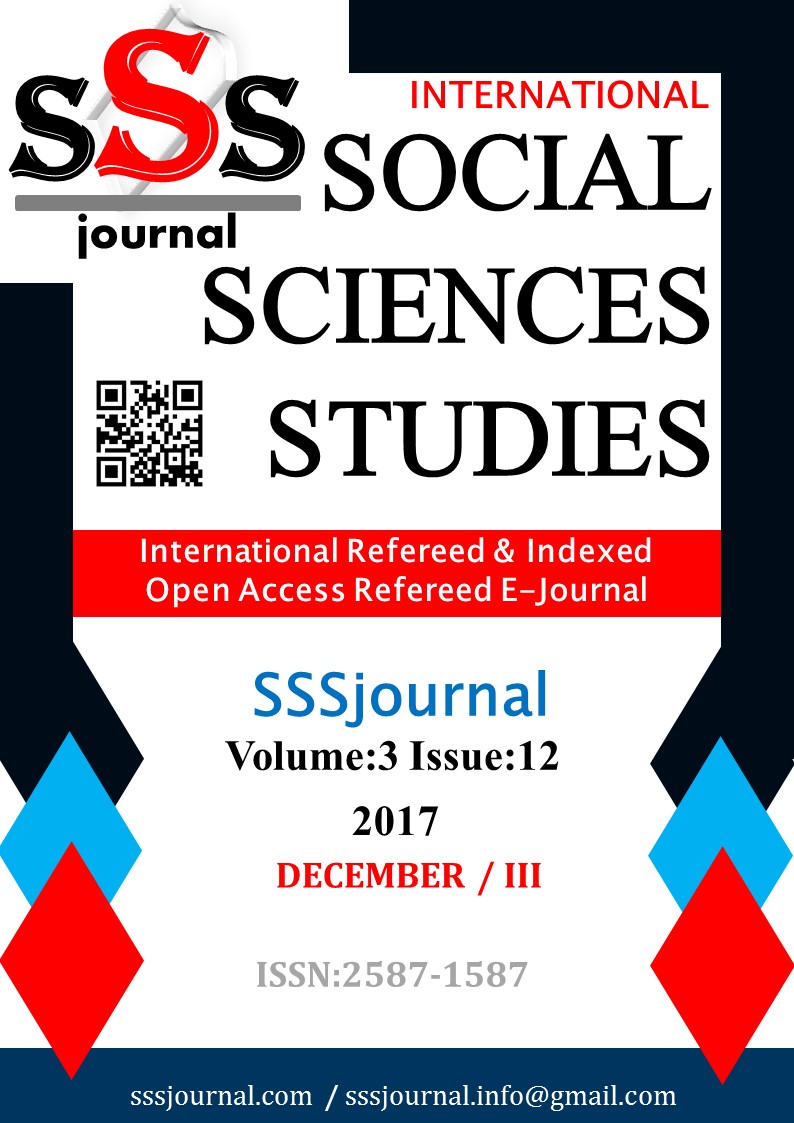Author :
Abstract
2008 global ekonomik krizinin etkilerini görmek amacıyla birçok ülkede çok sayıda çalışma yapılmıştır. Bu çalışma, kriz etkilerinin mikro bazda diğer bir ifadeyle, Borsa İstanbul’a kote olan 112 Türk imalat sanayi şirketi üzerinde istihdam açısından incelenmesi sebebiyle kriz literatürüne yenilik getirmektedir. Toplanan veriler ışığında 2009 birinci çeyreğinde, göze çarpan bir işten çıkarma gerçekleşmiştir. İstihdamda iyileşme ancak 2010 ikinci çeyreğinde görülebilmiştir. İstihdam verisi ile yapılan panel veri analizi, net borç ve toplam varlıkların çalışan sayısı üzerinde değişikliğe neden olduğunu göstermiştir. Genel sonuç olarak, dikkatli borçlanan şirketler diğer şirketlere kıyasla bu global kriz döneminde istihdam açısından daha iyi bir performans sergilemişlerdir.
Keywords
Abstract
Many studies have been conducted in several countries to analyze effects of the 2008 global crisis. This study makes a significant contribution to crisis literature as it focus on the employment perspective of 112 manufacturing companies listed on Bourse İstanbul. The analysis shows that an important amount of layoffs has occurred in the first quarter of 2009. Improvement in employment can only be achieved in the second quarter of 2010. The panel data analysis conducted proves evidence that net debt and total assets have an effect on employee number. The general conclusion emphasizes the fact that firms that have less debt perform better compared to firms having more debt during this global crisis from the employment perspective.
Keywords
- Bentolila, S., Cahuc, P., Dolado, J.J, Le Barbanchon, T. (2010). “Two-Tier Labor Markets in the Great
- Bentolila, S., Cahuc, P., Dolado, J.J, Le Barbanchon, T. (2010). “Two-Tier Labor Markets in the GreatRecession: France vs. Spain”, CEPR Discussion Paper, No. DP8152. Available at SSRN: https://ssrn.com/abstract=1729571
- Burger, A., Damijan, J.P., Kostevc, C. and Rojec, M. (2017). “Determinants of firm performance and growthduring economic recession: The case of Central and Eastern European countries”, Economic Systems, http://dx.doi.org/10.1016/j.ecosys.2017.05.003
- Campello, M., Giambona, E., Graham, J.R. and Harvey, C.R. (2010). "Liquidity management and corporate investment during a financial crisis", NBER Working Paper Series, No.16309.
- Campello, M., Graham, J.R. and Harvey, C.R. (2009). "The real effects of financial constraints : evidence from a financial crisis", NBER Working Paper Series, No. 15552.
- Carneiro, A., Portugal, P. And Varejão, J. (2014). “Catastrophic job Destruction during the Portuguese Economic Crisis”, Journal of Macroeconomics, Vol. 39, p. 444–457.
- Çabuk, A. And Ozkan, G. (2010). “Impacts of the Global Financial Crisis on the Turkish Real Sector: The Bursa Case”, ZKÜ Sosyal Bilimler Dergisi, Cilt 6, Sayı 12, s. 1–23
- Çağdaş, Ş. (2012). “STATA Atelier: Basic Econometric Analysis”, School of Research Methods, Bahçeşehir University, Istanbul.
- Dömbekci, B. (2014). “The Effects Of 2008 Global Economic Crisis on Borrowing Rates of ManufacturingCompanies: Pre-Crisis and Crisis Comparison”, Journal of Financial Researches and Studies, Vol. 5, No.10, p. 33-52.
- Dömbekci, B. (2012). “The Effects of 2008 Global Economic Crisis on Manufacturing Companies Listed at Istanbul Stock Exchange: Pre-crisis and Crisis Comparison” Phd Thesis, Marmara University, Istanbul.
- Elsby M. W. L., Hobijn B., and Sahin A. (2010). "The Labor Market in the Great Recession", Brookings Paperson Economic Activity, Economic Studies Program, The Brookings Institution, vol. 41(1 (Spring), pages 1-69.Fernandes, A. P. and Ferreira, P. (2017). “Financing constraints and fixed-term employment: Evidence fromthe 2008-9 financial crisis”, European Economic Review, Vol. 92, p. 215–238. http://dx.doi.org/10.1016/j.euroecorev.2016.12.009
- FINNET (2012). Annual Reports, Istanbul.
- Hatipler, M. (2011). “Türkiye Ekonomisine Etkileriyle Küresel Finans Kriz”, Trakya Üniversitesi Sosyal Bilimler Dergisi, Cilt 13, Sayı 2, p.191-214.
- Hernando, I. and Martinez-Carrascal, C. (2005). "The impact of Financial Variables on Firms’ Real Decisions: Evidence from Spanish Firm-level Data", BIS Paper Series, No.22.
- Hijzen, A., Kambayashi, R., Teruyama, H. and Genda, Y. (2015). “The Japanese labour market during theglobal financial crisis and the role of non-standard work: A micro perspective”, Journal of The Japanese and International Economies, Vol.38, p. 260–281.
- Household Labor Force Statistics, (2011), TURKSTAT
- Huang, J., Zhi, H., Huang, Z., Rozelle, S. and Giles, J. (2011). “The Impact of the Global Financial Crisis onOff-farm Employment and Earnings in Rural China”, World Development, Vol. 39, No. 5, p. 797–807. doi:10.1016/j.worlddev.2010.09.017
- OECD (2017), Main Economic Indicators, Vol. 2017/5, OECD Publishing, Paris, http://dx.doi.org/10.1787/mei-v2017-5-en.
- Opler, T.C. and Titman, S. (1994). "Financial Distress and Corporate Performance", Journal of Finance, Vol. 49, No. 3, p. 1015-1040.
- Oscar-Torres, R. (2007). “Panel Data Analysis, Fixed & Random Effects”, http://dss.princeton.edu/training
- Servaas, S. and Naastepad, C.W.M. (2015). “Crisis and recovery in the German economy: The real lessons”, Structural Change and Economic Dynamics, Vol. 32, p. 11–24.
- STATA version 12. (2012), Data Analysis and Statistical Software.STATA Net Courses. (2012). “Introduction to STATA”, Web based couses, Stata Company. STATA Corp LP. (2012), “Getting Started with STATA”, Texas, USA.
- UCLA Resources. (2012)
- Woolridge, J. M. (2012). “Rudiments of STATA”. http://www.econ.jku.at/members/Halla/files/teaching/stata/stata_wooldridge.pdf





